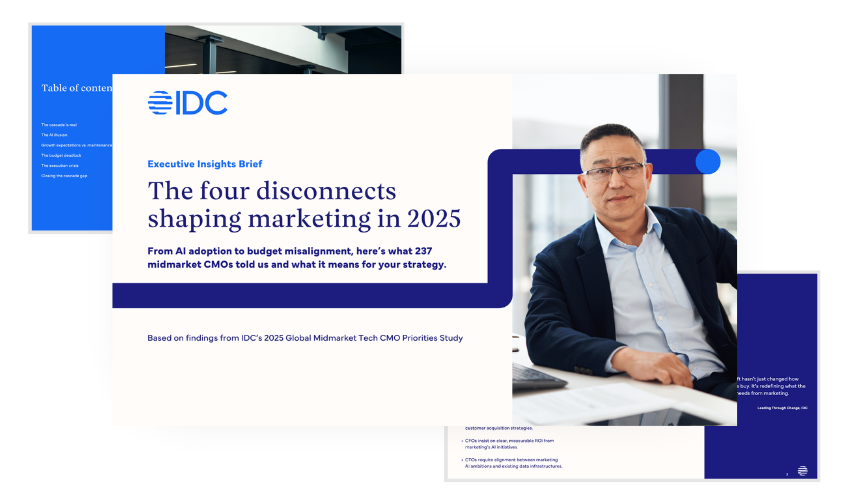For nearly two decades, search engine optimization (SEO) dictated how brands achieved visibility online.
Ranking high on Google or Bing meant being found, considered, and chosen based on certain criteria. Marketers built entire playbooks around understanding algorithms, shaping content, and winning the top position on the results page.
That world is changing. The rise of generative AI (GenAI) has introduced a new discovery experience. It is one that doesn’t list websites, but delivers answers and tailored recommendations directly to the consumer.
Where SEO once determined rankings, large language models (LLMs) are now shaping which brands appear in conversations and product suggestions. Some models, like Perplexity.ai, make the buyer journey completely seamless from discovery to purchase.
This isn’t a technical adjustment. It’s a strategic reset.
To stay relevant, marketers must learn how to influence the systems consumers increasingly rely on. LLM optimization, a new approach to impacting search results, is quickly becoming marketing’s next imperative.

To prepare your marketing organization for the move from SEO to LLM optimization, and other challenges facing modern marketers, download IDC’s Strategies for a Changing World: Six Scenarios for Marketing Leaders.
The shift from “search” to “chat”
IDC forecasts companies will spend up to five times more on LLM optimization than traditional SEO by 2029. This significant budget reallocation signals a broader move from AI experimentation to complete AI integration.
The momentum is clear. In response to ChatGPT’s debut in late 2022, major technology companies have launched (or are developing) their own customer-facing LLMs. Investment is accelerating as well: IDC projects a 59% compound annual growth rate (CAGR) in GenAI spending between 2023 and 2028.
Consumers are moving just as quickly. Over 45% of people now use GenAI weekly, often for personal research and recommendations. The parallels to the early days of search are striking, but this time, implementation is happening in just a few years, not decades.
For CMOs, this means visibility, strategy, and budget will increasingly hinge on how well the brand is represented within LLM systems.
Why SEO alone isn’t enough
SEO was built for a search-first internet. Keywords, backlinks, and metadata drove rankings and reach. But the AI experience era is changing search in ways SEO alone cannot address.
Most major engines now feature enhanced search, where AI-generated summaries appear above traditional rankings. Even the best-optimized content is pushed further down the page. And when customers move directly to platforms like ChatGPT or Perplexity, they bypass ranked results entirely.
In this environment, the familiar metrics of SEO lose influence. A page may be perfectly optimized for keywords yet never shape how an AI model interprets or recommends a brand. Representation is increasingly determined by what the model ingests and prioritizes, not by where content appears in a list.
To remain discoverable, marketers must look beyond search engines. The question isn’t how to rank higher, it’s how to be recognized and represented in AI-powered responses.
Rewriting the rules of visibility
Generative AI has introduced a new standard for digital discoverability. LLMs don’t rank pages; they synthesize responses and recommend options. That means fewer opportunities for discovery, with higher stakes for inclusion.
This new environment is giving rise to practices like Generative Experience Optimization (GEO). GEO focuses on structuring content so it can be ingested and surfaced by generative engines. Research shows it works: brands that apply GEO practices can see up to a 40% increase in visibility within AI-generated responses.
But GEO is only the beginning. It’s a bridge to the broader discipline of LLM optimization: the ability to shape how models interpret, prioritize, and present brands across conversations, shopping experiences, and enterprise tools.
The growing consumer expectation for personalization makes this transition even more important. Customers now frame queries by values and preferences – for example, asking for sustainable brands, locally sourced products, or companies with strong ESG records.
Meeting these demands requires more than SEO tactics. It requires a full LLM optimization strategy to ensure your brand is consistently represented in the answers customers already trust.
Why this matters for marketing leaders
LLM optimization isn’t another channel shift. It’s a new foundation for reach and relevance.
Marketing leaders are under pressure to adapt to the new AI-powered paradigm:
- Competitive urgency: Early adopters are already experimenting with how to shape generative answers. Just as first movers in SEO once dominated search results, those who adapt quickly will capture an outsized share in LLM-driven recommendations.
- Customer experience: Generative platforms increasingly guide discovery and decision-making. If your brand is absent or misrepresented in these interactions, you won’t even be on customers’ radar.
- Brand reputation: Because LLMs synthesize context, any inaccuracies or outdated information about your brand can quickly be amplified, displacing the identity you want to project.
- Budget challenges: As resources are dedicated toward AI priorities, marketing leaders must demonstrate the value of investing in LLM optimization over long-established tactics.
It’s clear: waiting is not an option for marketing leaders. LLM optimization will determine which brands are consistently elevated in the channels where customers are discovering new products and solutions.
Preparing for the LLM era
As with AI adoption, implementing LLM optimization requires more than experimenting with new tactics It demands a deliberate transition in how marketing organizations approach visibility. IDC has identified three priorities for leaders preparing for this transition:
- Audit your brand presence in LLM systems. The way your brand appears in generative search defines the new baseline of representation. If you’re absent from LLM search results, you’ll be invisible to consumers.
- Create content optimized for GenAI models. Generative systems reward clarity and authority, not just keywords. The signals that once boosted a page in search rankings aren’t the same ones that will cause a brand to feature in an AI response. You must develop an integrated content strategy primed for ingestion and prioritization within LLMs.
- Devote training and resources to GenAI marketing. LLM optimization is not SEO by another name. Additional investment and a fresh mindset are essential to help marketing teams adapt to the new AI-driven content creation standards.
This is just the starting point. Full transformation will require cross-functional alignment, new success metrics, and a commitment to showing up where decisions begin.
The new strategic imperative
The shift from SEO to LLM optimization marks a new era of discovery where AI determines which brands are visible, trusted, and recommended. For marketing leaders, the risk of inaction is invisibility in the very channels where customers go for answers.
The opportunity is clear. Those who prioritize LLM optimization will shape how their brand is represented in an AI-first world, ensuring they have a voice in the conversations that drive decisions. The future of marketing is no longer just about rankings. It’s about investment, leadership, and earning consumers’ trust.
Dive deeper into how to prepare for the future of LLM optimization with IDC’s Strategies for a Changing World: Six Scenarios for Marketing Leaders. Explore the strategic frameworks, emerging roles, and high-impact actions that will define success in the LLM era.




